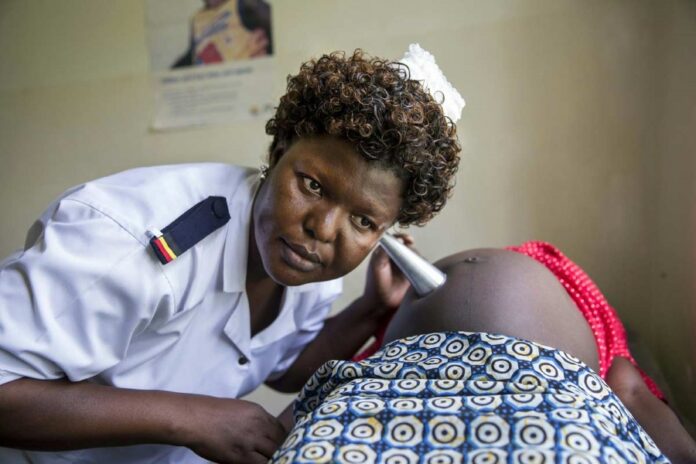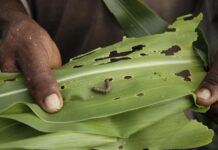Illustrative Image: Low-Dose Calcium: A Breakthrough Strategy to Prevent Pre-Eclampsia in Sub-Saharan Africa
Image Source & Credit: Gavi
Ownership and Usage Policy
A recent study by Kokori et al. (2025) titled “Optimising pre-eclampsia prevention: Embracing low-dose calcium in sub-Saharan Africa” published in International Journal of Gynecology & Obstetrics reveals that low-dose calcium supplementation (500 mg/day) could be a game-changing intervention for preventing pre-eclampsia in sub-Saharan Africa.
“
Low-dose calcium supplementation (500 mg/day) is a practical, effective strategy to prevent pre-eclampsia in sub-Saharan African pregnancies.
– Kokori et al. 2025
A new study tackles a critical maternal health issue in sub-Saharan Africa: pre-eclampsia—a dangerous pregnancy complication linked to high blood pressure and organ damage. The authors advocate for a shift from the widely recommended high-dose calcium supplementation (1500–2000 mg/day) to a more practical, affordable low-dose alternative (500 mg/day) as a preventive measure.
This proposed change could have a major impact in low-resource settings, where the cost, availability, and side effects of high-dose regimens often limit their effectiveness. The study highlights how low-dose calcium supplementation offers a safe, effective, and more feasible solution to reduce pre-eclampsia risk, especially in areas where access to prenatal care is limited. Evidence from Ghana, Nigeria, and Ethiopia shows a clear association between low maternal calcium levels and higher rates of pre-eclampsia. Compared to high-dose supplementation, the low-dose approach may offer similar protective benefits while enhancing compliance and lowering barriers to access.
How the Study was Conducted
The study employed a narrative review methodology, the study systematically gathered and critically analyzed existing research related to calcium supplementation and the prevention of pre-eclampsia in sub-Saharan Africa. To conduct this review, the authors searched multiple academic databases, including PubMed, Google Scholar, Cochrane Library, and Scopus. The search was limited to peer-reviewed articles published in English between 2000 and March 2024. Key search terms included: “pre-eclampsia,” “low-dose calcium,” “maternal health,” “sub-Saharan Africa,” and “nutritional interventions.”
A wide range of literature was included based on specific inclusion criteria, encompassing:
- Clinical trials
- Observational studies
- Systematic reviews
- Reference lists from relevant papers
The overarching aim of this approach was to evaluate the feasibility and effectiveness of low-dose calcium supplementation (500 mg/day) as an alternative to the high-dose standard. In doing so, the authors sought to compare outcomes between low- and high-dose calcium regimens and identify context-specific barriers and enablers to implementation, generate evidence-based insights to support policy and clinical decision-making that align with the region’s socioeconomic and healthcare challenges
What the Authors Found
The authors found compelling evidence that low-dose calcium supplementation (500 mg/day) could be a game-changing intervention for preventing pre-eclampsia in sub-Saharan Africa, with several key findings drawn from both global trials and regional data.
Why is this important
Maternal and Neonatal Survival: Pre-eclampsia is one of the leading causes of maternal and neonatal deaths in the region. It’s especially devastating in areas where access to quality healthcare is limited. Preventing it through something as simple and affordable as low-dose calcium could save countless lives.
Practicality in Resource-Limited Settings: High-dose calcium has always been recommended—but it’s expensive, difficult to distribute, and often poorly tolerated. Low-dose calcium, in contrast, is cheaper, easier to take, and more widely acceptable, especially in regions where pregnant women may struggle with multiple health challenges and limited prenatal care.
Scalability: If low-dose calcium proves as effective as high-dose (as some studies suggest), it means health ministries and aid organizations can scale up prevention programs faster, reaching more women without needing massive resources.
Empowering Communities: The study also emphasizes the importance of awareness and education. By equipping healthcare workers and communities with the knowledge and tools to prevent pre-eclampsia, it promotes self-reliance and informed health choices.
Advancing Equity: Ultimately, this is about closing the maternal health gap between rich and poor nations. It’s a move toward ensuring that where a woman lives doesn’t determine whether she survives pregnancy.
What the Authors Recommended
- The authors urge health systems across sub-Saharan Africa to incorporate 500 mg/day calcium supplementation into routine antenatal care, particularly in regions with low dietary calcium intake. This shift would make supplementation a proactive, standardized part of maternal health services.
- Effective implementation hinges on awareness and understanding. The authors recommend training healthcare workers to communicate the benefits and safety of calcium supplementation using culturally appropriate messaging and running public awareness campaigns to demystify pre-eclampsia and reduce stigma or misinformation.
- To enhance uptake, the authors call for practical innovations and supply chain improvements to develop cost-effective, user-friendly formulations like chewable or flavored tablets as well as to ensure consistent availability of low-dose calcium in clinics, especially in rural and underserved areas.
- The study emphasizes the need for strong policy backing and financial support, including listing low-dose calcium on national essential medicines lists, incorporating it into maternal health policies and guidelines and subsidizing or offering free distribution through public health programs.
- Recognizing Africa’s diverse cultural and healthcare contexts, the authors recommend tailoring interventions to local realities rather than adopting a one-size-fits-all approach. They also advocate for more local research on the effectiveness, safety, and adherence to low-dose calcium and exploring combination strategies with vitamin D or low-dose aspirin, especially for high-risk pregnancies.
In conclusion, the study by Kokori et al. (2025) presents a compelling case for rethinking pre-eclampsia prevention strategies in sub-Saharan Africa by embracing low-dose calcium supplementation. With its affordability, ease of implementation, and strong potential to save maternal and neonatal lives, this approach offers a transformative solution tailored to the region’s healthcare realities. By aligning policy, education, and supply chains to support this shift, stakeholders can make significant strides toward equitable, sustainable maternal health outcomes across the continent.
















 The African Research (AR) Index is a comprehensive scholarly directory and database focused explicitly on journal publishers that publish and disseminate African research.
The African Research (AR) Index is a comprehensive scholarly directory and database focused explicitly on journal publishers that publish and disseminate African research.

